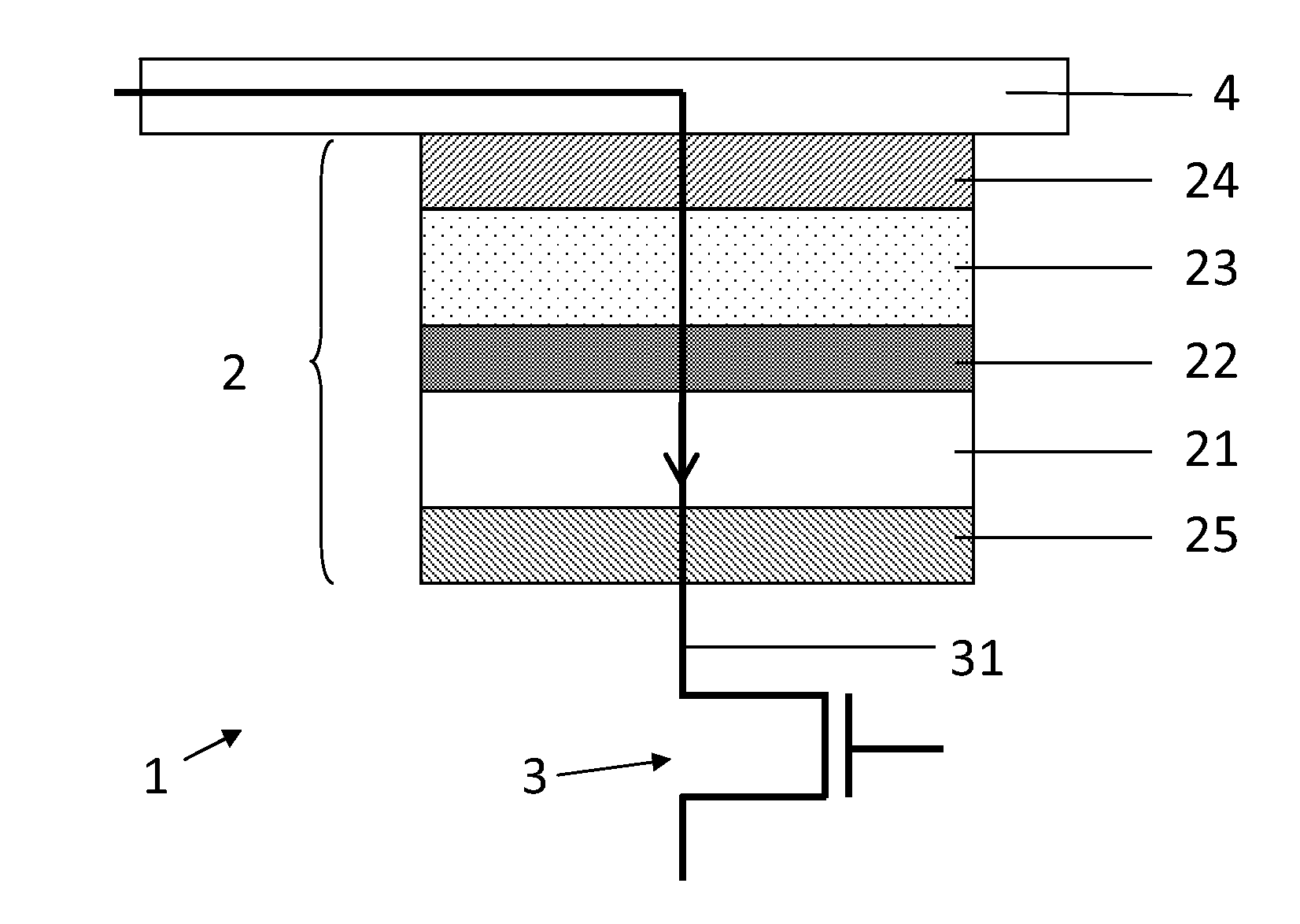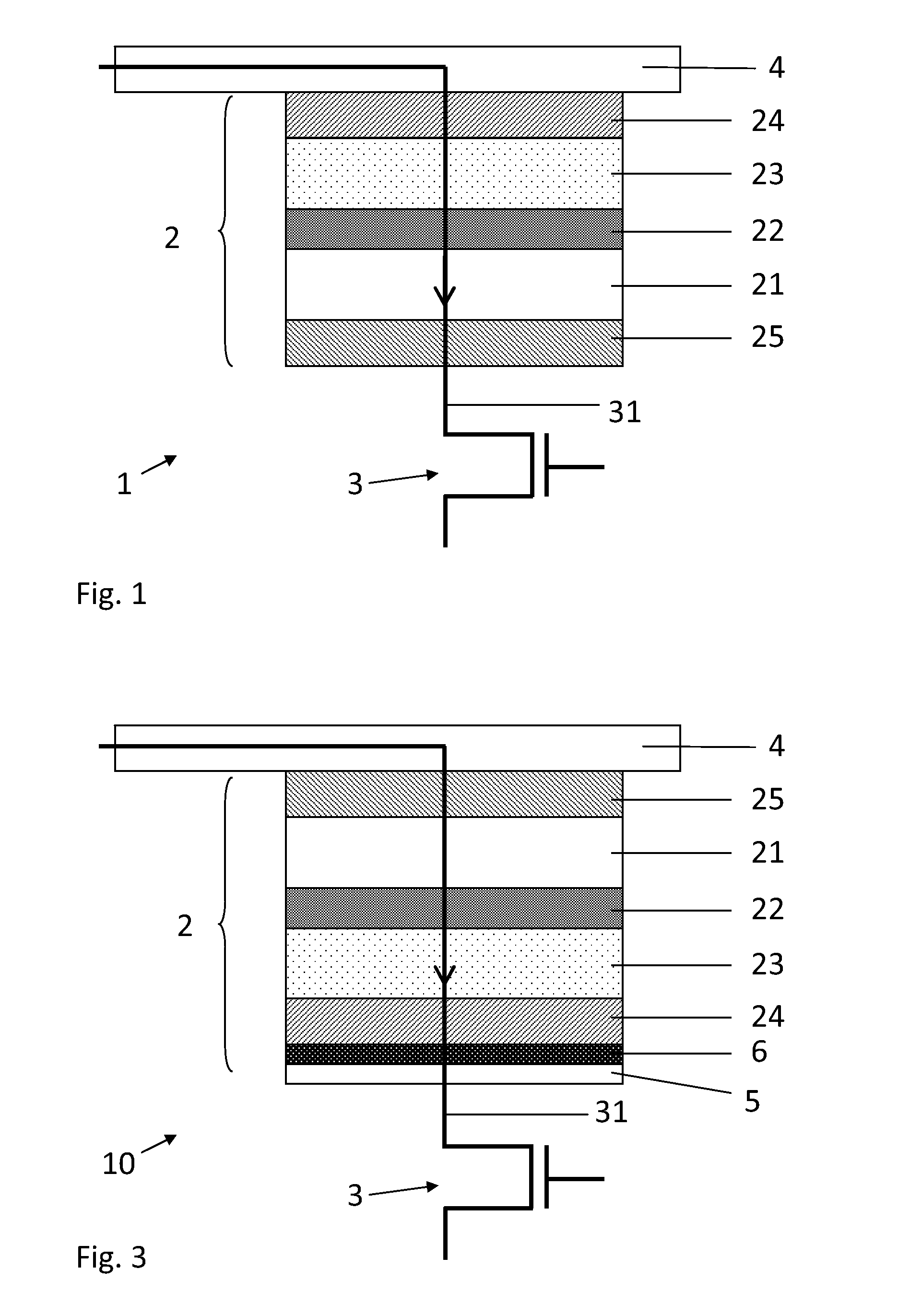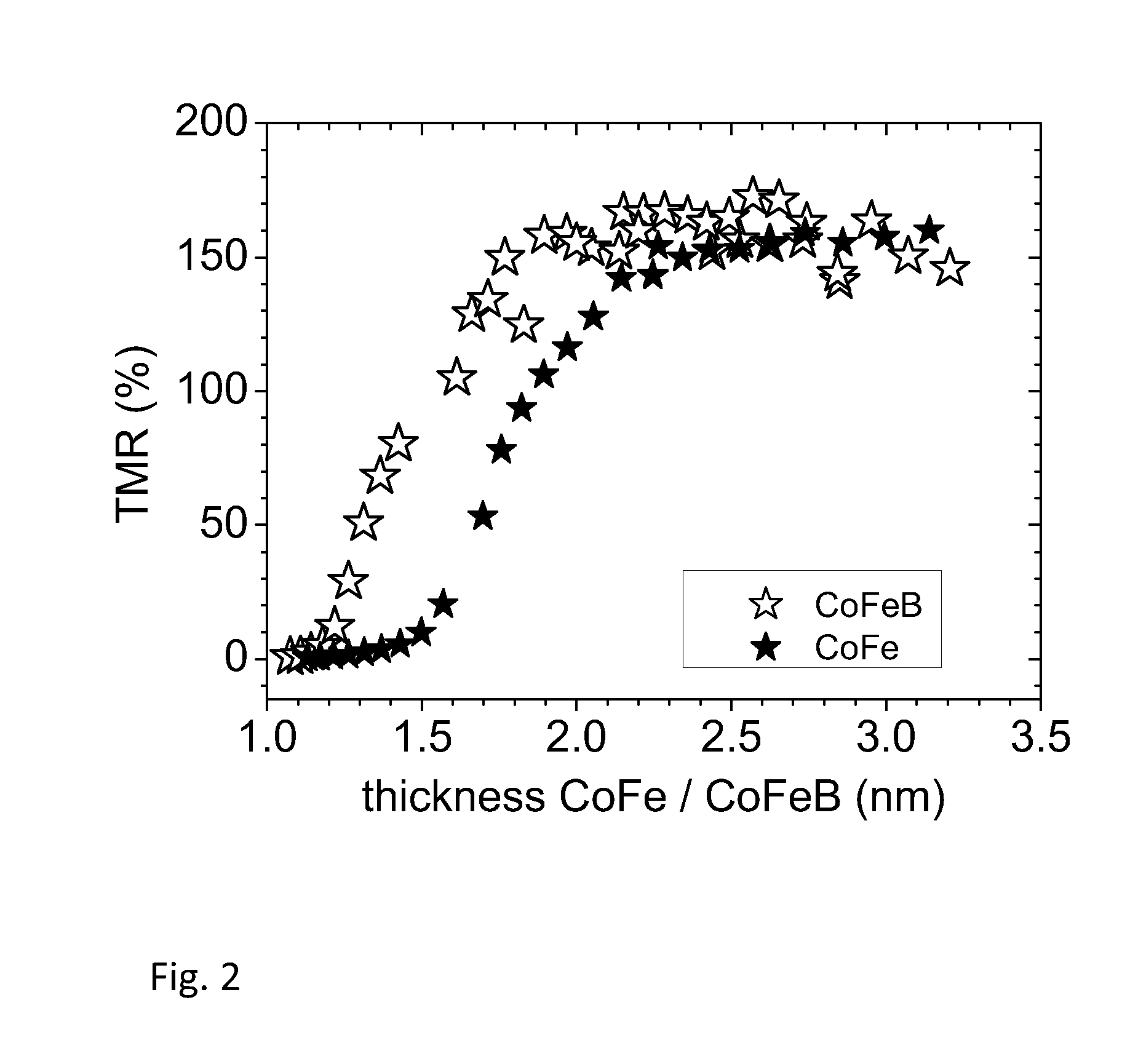Low power magnetic random access memory cell
- Summary
- Abstract
- Description
- Claims
- Application Information
AI Technical Summary
Benefits of technology
Problems solved by technology
Method used
Image
Examples
Embodiment Construction
[0041]FIG. 3 represents a magnetic random access memory (MRAM) cell 10. The MRAM cell 10 comprises a magnetic tunnel junction 2 comprising, from top to bottom, a first ferromagnetic layer 21 having a first magnetization magnetization direction, a tunnel barrier layer 22, and a second ferromagnetic layer 23 having a second magnetization direction that can be adjusted with respect to the first magnetization direction. A top electrode, or current line 4, is electrically connected to the magnetic tunnel junction 2 on the side of the first ferromagnetic layer 21. A front-end layer comprising, represented by a CMOS selection transistor 3 in FIG. 3 is electrically connected to the magnetic tunnel junction 2, possibly via a bottom electrode 5, on the side of the second ferromagnetic layer 23. The front-end layer can comprise one or more layers of a dielectric such as silicon oxide or low-k dielectric materials disposed over silicon single-crystal silicon, for example. The front-end layer ma...
PUM
 Login to View More
Login to View More Abstract
Description
Claims
Application Information
 Login to View More
Login to View More - R&D
- Intellectual Property
- Life Sciences
- Materials
- Tech Scout
- Unparalleled Data Quality
- Higher Quality Content
- 60% Fewer Hallucinations
Browse by: Latest US Patents, China's latest patents, Technical Efficacy Thesaurus, Application Domain, Technology Topic, Popular Technical Reports.
© 2025 PatSnap. All rights reserved.Legal|Privacy policy|Modern Slavery Act Transparency Statement|Sitemap|About US| Contact US: help@patsnap.com



